The Temple of Hatshepsut: The History and Mystery of the Queen’s Life
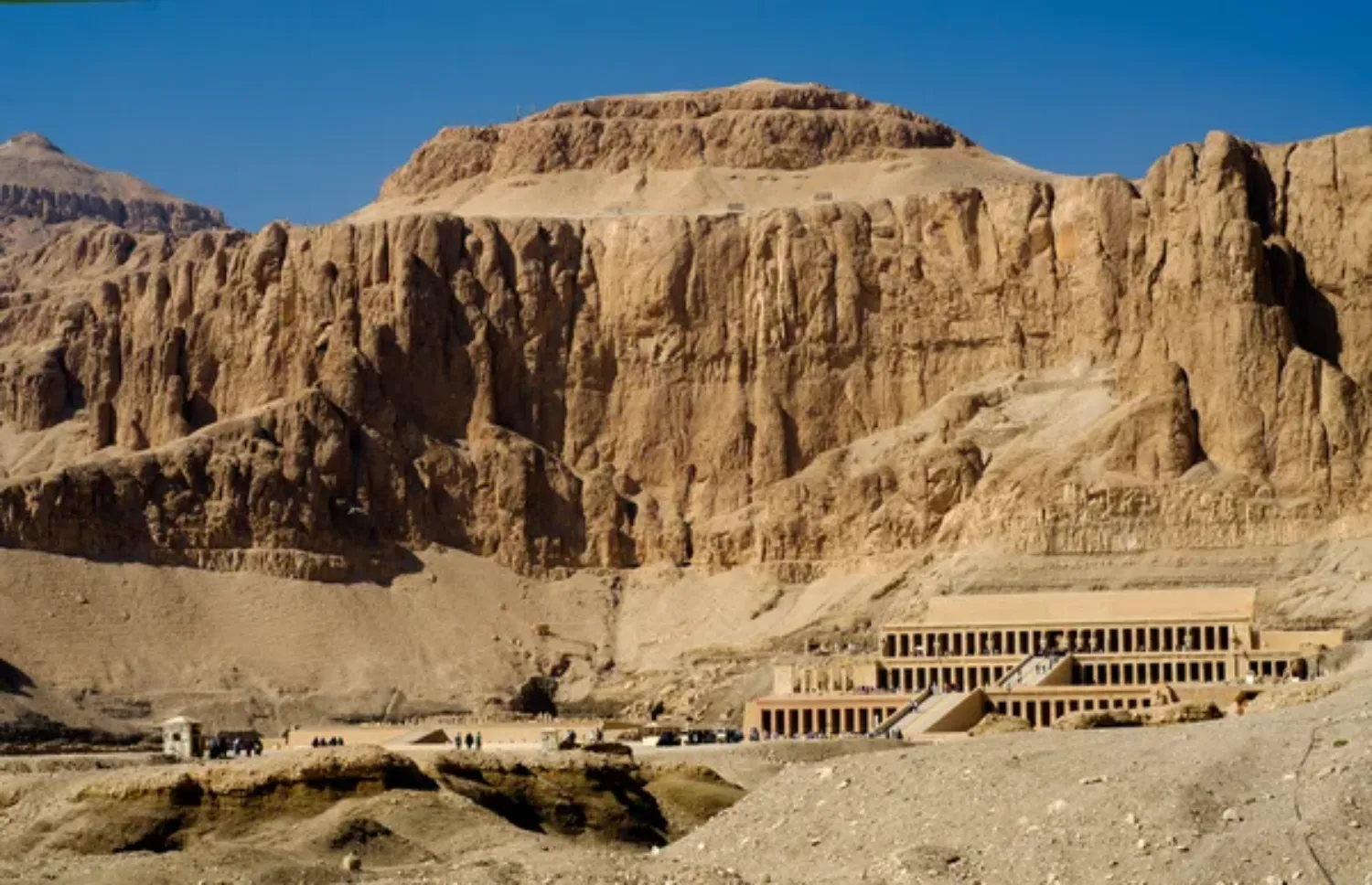
Updated On: February 19, 2024 by Ciaran Connolly
In the arid expanse of Egypt’s desert landscape, where the golden sands of time whisper ancient tales, lies a monumental testament to a remarkable reign – the Mortuary Temple of Hatshepsut.
This enduring symbol of power and persistence is nestled in the rugged cliffs of Deir el-Bahri, its grandeur unfazed by the passage of millennia. It harks back to that era when the Nile’s fertile banks flourished under the rule of a pharaoh unlike any other.
Hatshepsut, the woman who ruled as a female pharaoh in a realm dominated by men, left an indelible imprint on the annals of ancient Egypt. Considered the longest reigning female pharaoh, Hatshepsut reigned for about 22 years (1473-1458 BC), which is longer than any woman of the native Egyptian dynasty.
Under Hatshepsut, Egypt experienced a period of economic prosperity and architectural innovation. She commissioned numerous building projects throughout Egypt, including her mortuary temple at Deir el-Bahri, which stands as a testament to her vision. Hatshepsut’s reign was a time of stability and growth that left an enduring legacy on the sands of Egypt, a legacy that continues to captivate visitors today.
A journey through this architectural marvel is more than a walk through stone corridors – it is a voyage back in time, an exploration of Hatshepsut’s legacy, and a testament to the enduring allure of Egypt’s ancient past.
The Unconventional Tale of Her Ascension
Hatshepsut’s ascension to the throne is a tale that veers from the conventional path, a narrative that speaks volumes about her audacity and tenacity. Born into the royal family, she was initially wed to her half-brother, Thutmose II, becoming his queen consort.
However, a twist of fate presented itself upon his death. With Thutmose III, his heir and Hatshepsut’s stepson, too young to rule, she stepped in as regent, stewarding the kingdom until he came of age.
However, Hatshepsut was not content with merely serving as a placeholder. Recognising an opportunity, she made an unprecedented move, declaring herself pharaoh and adopting all the royal titles as the king of Egypt.
This bold decision resulted in her becoming one of the very few female pharaohs in the history of ancient Egypt. Her successful reign of over two decades demonstrated her exceptional leadership abilities and her political acumen, forever marking her as one of the most influential figures in Egypt’s history.
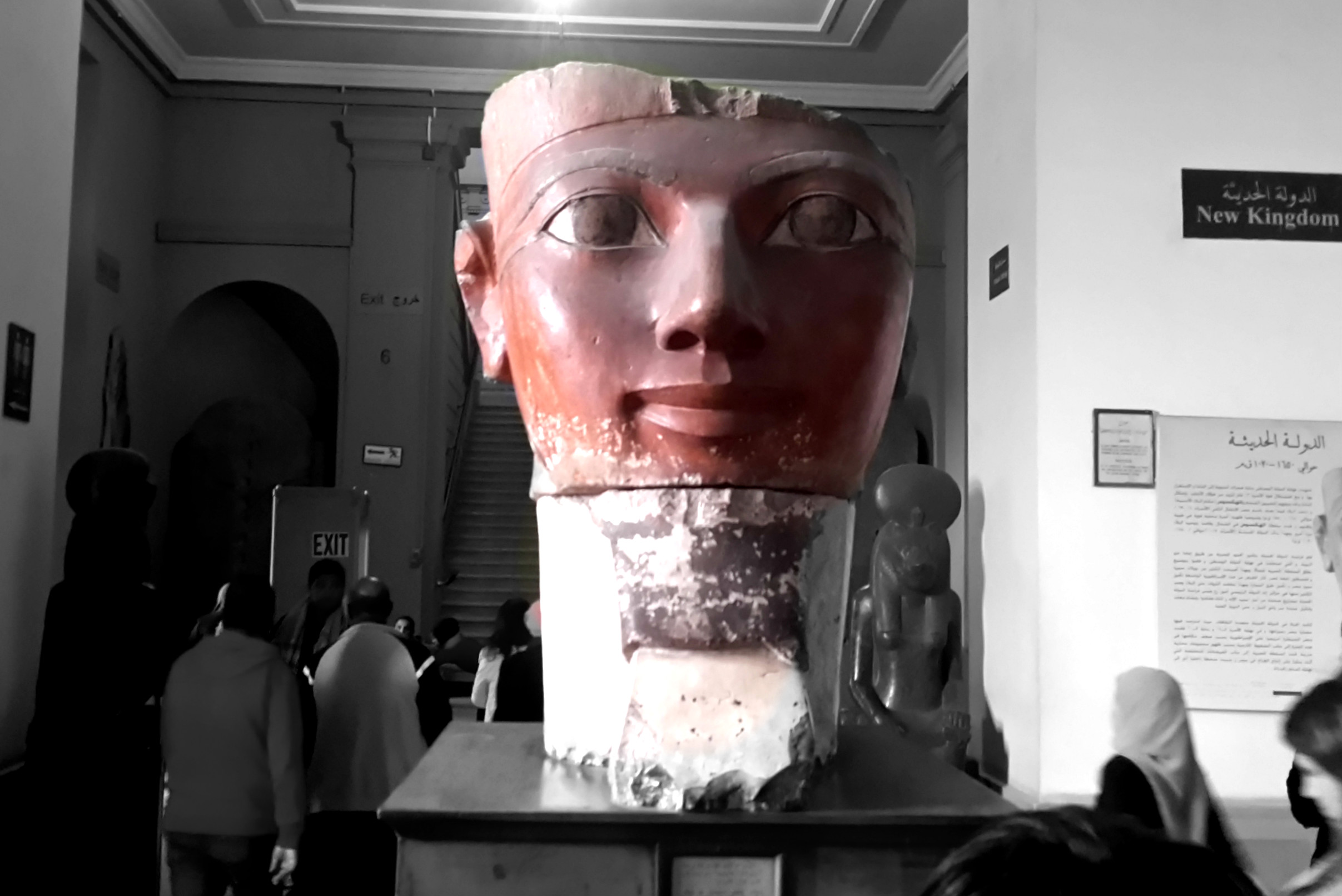
Ruling as a Male Pharaoh
Hatshepsut’s reign was marked by astute strategies and innovative approaches to legitimising her rule. Among the most intriguing aspects of her reign was her choice to be depicted as a male pharaoh in many statues and reliefs.
Despite being a woman, she often adorned herself in the traditional male pharaoh’s attire, which included a kilt, a headdress, and even a false beard. This was a calculated move designed to reinforce her authority in a society steeped in patriarchal norms and unaccustomed to female rulers.
Hatshepsut’s decision to represent herself as a male pharaoh highlights her innovative approach to leadership and her determination to navigate the complex gender expectations of her time.
Hatshepsut’s Religious Activities and Her Depiction as a God
To reinforce her position as a ruler, Hatshepsut pursued an unprecedented path. She appropriated the divine symbolism associated with pharaohs, portraying herself in male regalia and using masculine pronouns.
This distinctive representation transcended mere appearances; she even claimed a divine male lineage, asserting that the god Amun-Ra himself had chosen her as his earthly embodiment.
Depicting herself as the god Osiris, the ruler of the afterlife, she dedicated herself to the worship of Amun, the supreme god, enhancing his cult through the construction of magnificent temples at Karnak and Deir el-Bahari.
By aligning herself with divine figures, Hatshepsut aimed to legitimise her rule and bridge the gap between the divine and mortal realms.
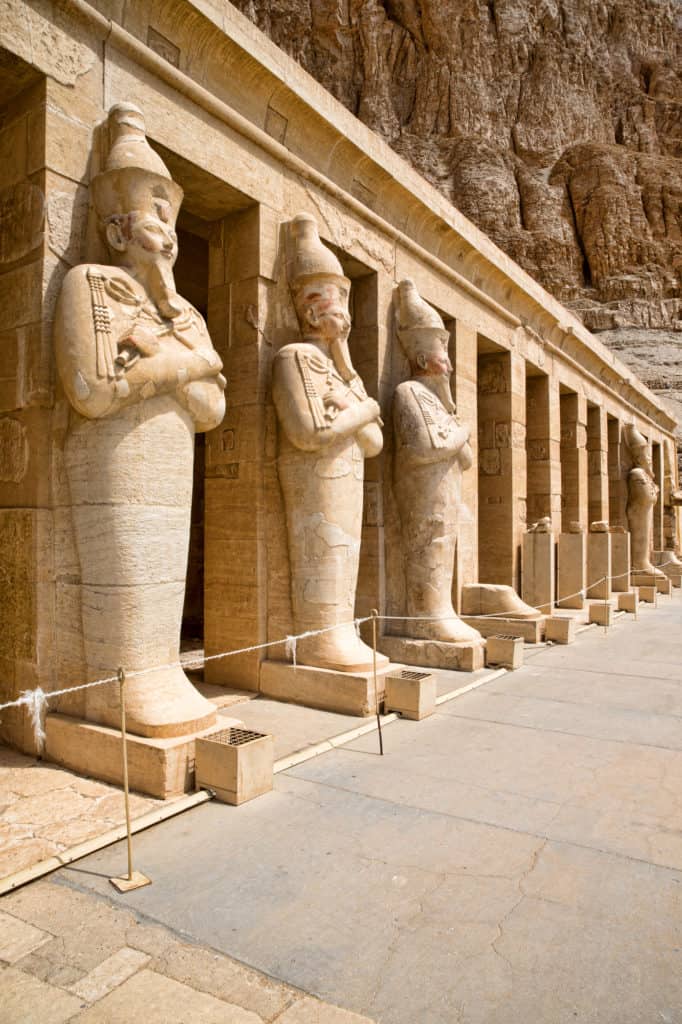
The Extraordinary Punt Expeditions
Hatshepsut’s reign is notably marked by her significant focus on enhancing trade, which stands as one of her most considerable accomplishments. She revived the trade networks that had been disrupted during the Hyksos occupation of Egypt, establishing trade relations with far-off lands.
The most famous of these was a grand expedition to the mysterious land of Punt, located somewhere in present-day Eritrea or Somalia; Punt was known as the “Land of God,” famed for its riches and exotic goods.
The expedition returned with a bounty of precious materials that had never before been seen in Egypt. They brought back incense, myrrh, frankincense, gold, and ebony, along with exotic animals and plants, enriching Egypt’s economy and adding to the grandeur of Hatshepsut’s reign.
This ambitious expedition, the first of its kind in nearly 500 years, was a logistical marvel involving several ships and hundreds of men. Its success was a testament to Hatshepsut’s leadership and strategic foresight. This successful expedition not only added to Egypt’s wealth but also to Hatshepsut’s prestige.
What makes this expedition even more fascinating is its detailed documentation in the form of stunning reliefs at the Mortuary Temple of Hatshepsut, providing a step-by-step narrative of the journey.
As a visitor, you are allowed to trace the path of this historic journey in the temple’s carved walls, immersing yourself in an ancient world of exploration and discovery.
An Architectural Leader
As a visionary leader, Hatshepsut recognised the power of architecture and the arts to immortalise her legacy. Her reign marked a period of architectural renaissance in ancient Egypt, with her commissioning numerous buildings, monuments, and obelisks that would redefine the country’s landscape.
Perhaps her most impressive architectural feat is the Mortuary Temple at Deir el-Bahri. Its unique design features cascading terraces and colonnades that starkly contrast with the rugged cliff backdrop, creating an extraordinary spectacle.
Hatshepsut’s architectural influence extended beyond her mortuary temple. She commissioned the erection of towering obelisks at Karnak, contributing to one of the most significant religious complexes in ancient Egypt. These obelisks, some of the tallest ever built, were adorned with inscriptions glorifying her reign, and their sheer size and grandeur continue to astound visitors today.
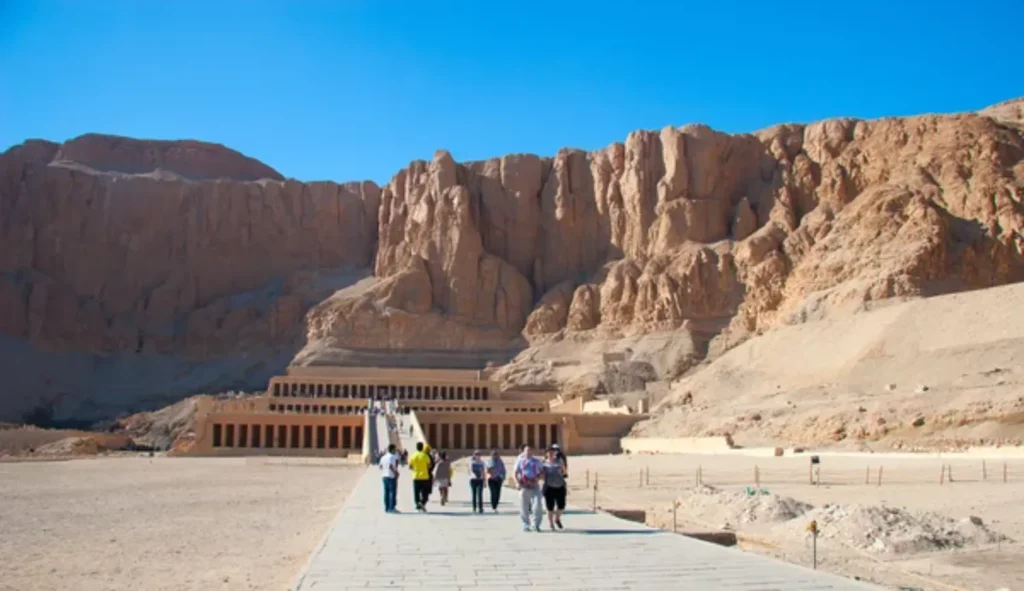
Disappearance and Rediscovery
Hatshepsut’s story doesn’t end with her death. Indeed, it takes a turn for the mysterious as the record of her successful reign was nearly wiped from the annals of history.
In a puzzling turn of events, after her death, her name and images were systematically removed from many monuments and replaced with those of her stepson Thutmose III or her late husband, Thutmose II. This attempt at erasure has led to much speculation among historians, with theories ranging from political power plays to religious motivations.
Despite these efforts, Hatshepsut’s legacy refused to be extinguished. Lost in the sands of time, her identity was obscured until the 19th century, when Egyptologists began to unravel the mystery. The painstaking task of piecing together fragmented records and deciphering ancient inscriptions gradually brought her story back to light.
Through 22 years of her reign, she successfully managed to maintain peace, prosperity and architectural innovation in Egypt. As you explore the temple at Deir el-Bahri, you’re not merely observing an ancient structure but witnessing a testament to Hatshepsut’s resilience. Her legacy survived the attempt at obliteration, and her story, once lost, now serves as a beacon to travellers drawn to the allure of ancient Egypt’s rich history.
Other Worth Visiting Locations Near the Temple
When planning your visit to the captivating world of Hatshepsut, be sure to spare time to explore other surrounding historical sites.
Here are some must-visit sites near Hatshepsut that will transport you back in time:
Valley of the Kings: Just a short distance from Hatshepsut’s mortuary temple at Deir el-Bahari lies the Valley of the Kings. This legendary burial ground is the final resting place of numerous pharaohs, including Tutankhamun and Ramses II. Marvel at the intricate tomb paintings, hieroglyphics, and elaborate burial chambers that reveal the beliefs and customs of the ancient Egyptians.
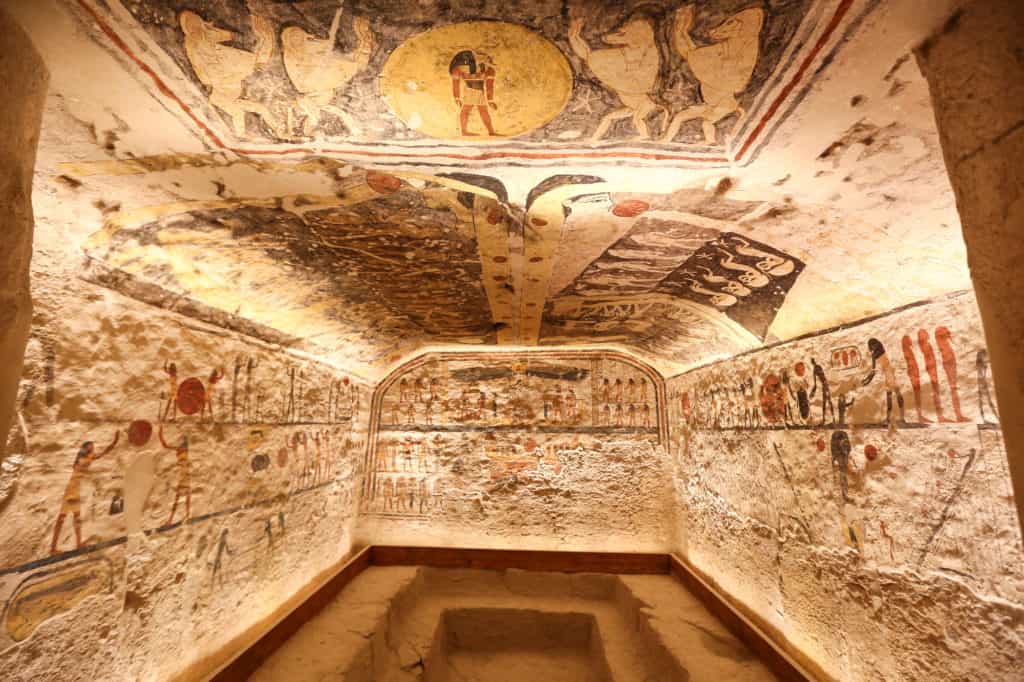
Karnak Temple Complex: Embark on a journey to the grandest temple complex in Egypt, located in the ancient city of Thebes. Karnak Temple Complex is a vast open-air museum that spans over 200 acres, featuring towering columns, colossal statues, and awe-inspiring sanctuaries. Explore the Hypostyle Hall, with its forest of 134 massive columns, and witness the remnants of Hatshepsut’s contributions to this sacred site.
Luxor Temple: Situated on the Nile River‘s east bank, Luxor Temple is an architectural marvel dedicated to the god Amun. Admire the colossal statues of Ramses II at the entrance and immerse yourself in the grandeur of the courts, pylons, and chapels that make up this ancient marvel. Experience the temple’s mesmerising atmosphere, especially during the enchanting evening illuminations.
The Colossi of Memnon: These imposing twin statues of Amenhotep III are remnants of an ancient mortuary temple. Standing at a staggering height of 18 metres, these colossal figures once guarded the entrance to the temple. Marvel at their sheer size and intricate details, and don’t forget to capture a memorable photograph beside these iconic symbols of ancient Egypt.
Travel Tips for Visiting The Mortuary Temple of Hatshepsut
By following the following practical tips, you can ensure a rewarding and memorable visit to Hatshepsut and the ancient sites that surround her.
The Best Time to Visit
The best time to visit Hatshepsut Temple and the ancient sites of Egypt is during the cooler months, from November to March. The temperatures are more pleasant, making it easier to explore the outdoor sites without discomfort.
Essential Items to Bring
While exploring the historical sites, it’s essential to bring comfortable walking shoes as you’ll be doing a lot of walking and climbing. Packing sunscreen, a hat and sunglasses are vital to protect yourself from the sizzling sun. It’s also as important to carry a refillable water bottle to stay hydrated throughout your tour.
Guided Tours
Consider joining a guided tour to enhance your experience at Hatshepsut and the surrounding sites. Knowledgeable guides can provide historical context and interesting anecdotes and navigate you through the vast temple complexes. They can help bring the stories of the pharaohs to life and ensure you don’t miss any significant details.
Transportation
The easiest way to reach Hatshepsut and the neighbouring sites is by hiring a taxi, joining a guided tour, or arranging private transportation. If you prefer public transport, minibuses and taxis are available, but they may not always offer the same convenience and flexibility as private options.
Time Allocation
Allocate sufficient time to explore each site thoroughly. Hatshepsut’s Mortuary Temple itself can take a few hours to appreciate fully. Plan for at least a full day to explore the major sites around Luxor, including the Valley of the Kings, Karnak Temple Complex, and Luxor Temple.
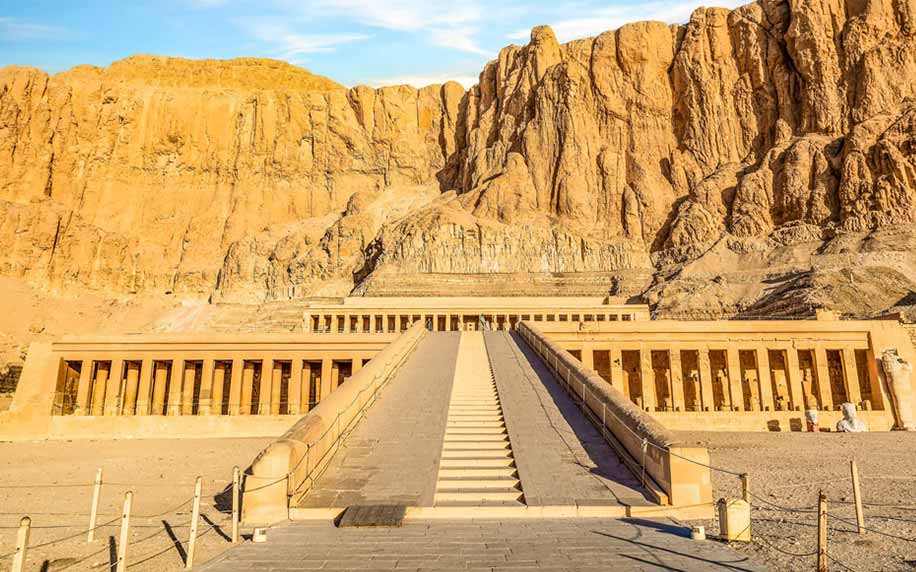
Photography
Capture the magical moments of your visit, but be mindful of the photography regulations and rules at each site. Some areas may have restrictions, and using a flash may be prohibited. Remember to respect the historical artefacts and structures by refraining from touching or climbing on them.
Respect the Culture
Egypt is predominantly an Islamic country where modesty is valued. So, it is important to cover your shoulders and knees and avoid wearing revealing clothing.
Early Morning Visits
Consider starting your exploration early in the morning to beat the crowds and make the most of your time. The sites are generally quieter during the early hours, allowing for a more peaceful and immersive experience.






